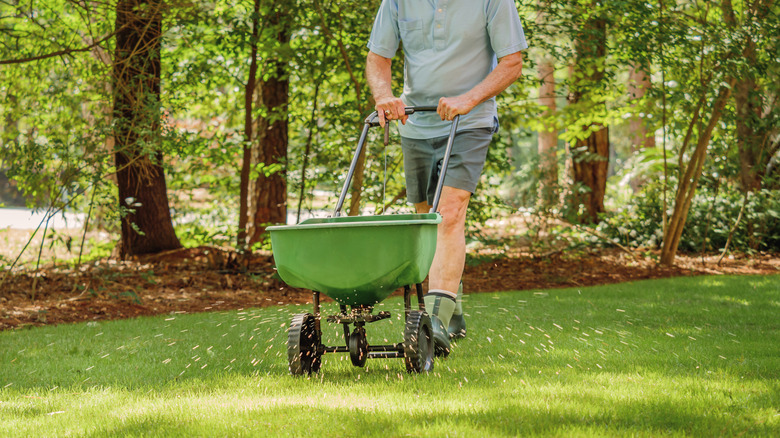How To Treat Your Lawn In September
As the seasons change from barbecues to pumpkin spice lattes, it also signals a significant shift in the care regimen for lawns: a transition from the scorching rays of summer to the onset of cooler temperatures. To promote deep root growth and ensure its resilience throughout the changing seasons, make watering adjustments, increase your mowing length, and be aggressive with pest management.
Before you begin any sort of lawn treatment, it's important that you test your soil so that you know what the nutrient levels and pH are. This will also save you time and energy because you won't be left guessing what kind of food your turf requires. It's also important to aerate your soil. When soil gets too compact, it puts the brakes on any potential root growth and limits the airflow necessary for proper growth. Lastly, you'll want to give your lawn a good dethatching. Having a thin layer of organic matter between the soil and grass can be good for your lawn. But if the thatch piles up to over half an inch thick, it'll start causing trouble by blocking water and nutrients and also be a pretty hospitable palace for troublesome insects and fungal infections.
How to properly care for your lawn
With the summer heat subsiding, the water requirements for your lawn will most definitely change. You'll want to avoid over-watering, and as a general guideline, aim for deep infrequent watering sessions, which will encourage stronger root growth. The best time to water is late afternoon, which will minimize any water loss due to evaporation and also prevent your lawn from possibly getting burnt by the combination of water and sunlight. Be sure to monitor the soil's moisture level and the appearance of the grass. If your lawn is sick or unbalanced, you'll be able to tell by any discoloration. If footprints linger after walking on the lawn, it's a sign that your lawn may need water.
Always clean up any fallen leaves and organic matter before it begins to decompose. Instead of letting it break down on your lawn, add it to your compost. Organic matter that begins to biodegrade on your lawn may sound like a nice nutrient boost, but it also acts as a homing beacon for not-so-nice bacterial and-or fungal issues and inhospitable bugs.
Feed your lawn accordingly
Opt for a well-balanced slow-release fertilizer with a high potassium content to help give your turf a boost against the cold and provide more resistance against disease and pests. Apply it early in the month to allow it to fully absorb before the cold winter months set in. When getting out your mower, you'll want to consider gradually increasing the cutting height, which will allow the grass to grow a little bit longer. This becomes especially beneficial as the days shorten, providing your lawn with the necessary nourishment despite the decreasing sunlight.
As your lawn transitions into its dormancy phase, it's a smart idea to reduce the frequency and intensity of fertilization, but don't overdo it. While nutrients are important, applying excessive fertilizer in September can promote late-season growth that might not have enough time to establish itself before winter. Instead, opt for a balanced, slow-release fertilizer that will provide the necessary nutrients needed.


